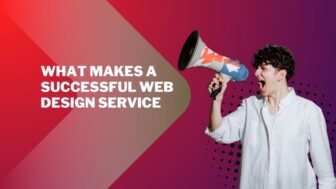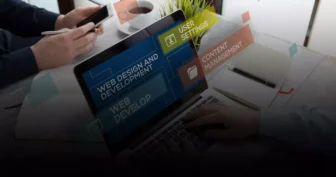Web Design Trends in 2024: Creating Engaging Online Experiences
By the year 2024, there will be to-the-brim-filled innovation and creativity in the digital environment. Web design is one huge concept that adds essence to this change in the evolution of user experiences. They go beyond following the aesthetics and create enchanting, interactive, and responsive online spaces that excite users to come and revisit, take a look, and spend a good time interacting with the space. From denser, more graphic-rich outputs to integration of AI-generated designs, web designing in 2024 will have new benchmarks for online experiences.
In this series on 2024’s web design trends, we look at ways to bring beauty and function together to make our websites beautiful—but also inclusive, accessible, and environmentally sustainable. Let us find out together what goes into the recipe to make engaging online experiences with the help of innovative design on your website.
1. The Renaissance of Bold Typography
This has always been a strong tool of the communication role for typography in web design, but 2024 sees it take on a new role as a bold statement maker. XXL footers and titles do much more than just fulfill the role of design elements; they are bearers of brand identity, setting the pace for the user experience on the site. This trend translates into a move toward the distinctiveness and character of web design: a focal point where typography grabs the user’s attention and makes a lasting impression from first sight.
The bold type has a lot to do with user engagement, as it breaks the routine of standard design and puts a personality into the digital space, making the website not only an information platform but also a canvas for artistic expression at the same time.
2. The Rise of AI-Generated Designs
As per Gartner in 2026, it is projected that generative AI will hugely change 70% of the design and development efforts with respect to completely new web applications and mobile apps. By 2024, the impact of AI in web design will be so pronounced that AI-generated designs are opening up dimensions in completely new ways for creative and efficient work. The new outcomes, such as unique designs, layouts, and user experience, will give to the designer what could previously not even be imagined.
AI-informed designs are not an issue of automation or speed; they embody technology with a mix of human creativity and machine intelligence that directs the way to the most personal and dynamic web experiences. This trend is rapidly redefining the design process in such a way that designers can now focus on high-level elements like innovation and strategy while the multifaceted execution is handled by AI.
3. Reviving Skeuomorphism with a Modern Twist
The returning trend: Skeuomorphism, the once hallmark of web design, with a modern twist in 2024. The design philosophy to imitate real-world textures and objects in digital form is being rethought in a manner that would make the online experience more instinctive and immersive. Such revival of skeuomorphism brings back into digital spaces something of the kind of familiarity that was present in analog environments and is highly amenable and accessible to people.
This is clearly visible in the use of 3D elements and textures imitating materials in real life, giving them depth and hyperrealism into the new web design. These blur lines between the digital and the physical by blending skeuomorphic principles with contemporary aesthetics. Designers on such websites are able to create a way more immersive and interactive experience for end-users.
4. Unleashing Creativity with Parallax Scrolling
In turn, the parallax scrolling, that more creative way to catch the users’ interest and tell the story, will keep on increasing until 2024 as a single technique to provide depth and movement to the design of the website. The background moves at a different speed compared to the foreground, hence creating an illusion of depth. This kind of trend just keeps captivating users while at the same time adding an even more storytelling nature to web design.
The parallax scrolling is being introduced to the design; it’s a new dynamism in the user experience, at the same time, a powerful tool for the expression of narrative. Designers help guide the user through a tour by presenting information and visuals in a manner quite logical and rather fetching.
5. Heritage Revivalism in Web Design
Living in the digital age, heritage revivalism really belongs to the past; it has been thrown into one of those swirling machines with all the rest of the past and future. This trend focuses on paying homage to the multifaceted tapestry of history by blending vintage aesthetics and classic design principles with modern technologies in order to bring into existence timeless online experiences. Heritage revivalism is more than just nostalgic; the design approach is rather tricky in that one has to use the emotional feeling from the past in order to design the heritage site and make it feel new and old at the same time.
From retro color palettes to vintage typography and archival imagery, this lends an air of nostalgia without sacrificing an old-school, cutting-edge user experience. That dual use serves not only to draw users in but to strengthen brand identity, making sites more memorable and engaging.
6. The Return of ’80s Excess in Digital Aesthetics
’80s excess returns with vengeance in web design as a brash departure from minimalism in 2024, known for its bright colors, bold patterns, and anything-goes visual attitude. This tendency is open for new creative and expressive potentials; it liberates with its freedom of the traditional design conventions and is destined to make the digital experiences dynamic and involving.
The ’80s revival in web design goes beyond a nostalgic nod; it is a renovation of the effervescent spirit of the decade for the contemporary web. Neon color, in combination with geometric shapes and animated elements, makes the website an exciting space that involves the user’s attention and imagination into its own. This trend brings sites which are not only attractive but also fun and active in order that the user feels free to play around with the resources he or she got on a site.
7. Brand Worldbuilding: Crafting Immersive Digital Universes
Worldbuilding has grown to be an effective trend in web design for brands looking to differentiate themselves in the busy digital environment. And this had to be done by creating a full-brand universe on the website so that all the elements, from visual design through content to user interface, would be elaborated very cautiously to fully embrace the brand identity and values.
Brand worldbuilding is about storytelling, engaging users in a narrative that unfolds as they navigate the website. This trend leverages multimedia elements such as video, audio, and interactive features to create multi-sensory experiences that are both engaging for the user and, consequently, drive deeper connections with the brand. Brands, by doing so, manage to create moments and feelings, inviting users into their unique world and encouraging to purchase through emotional attachment.
8. Dial-Up Design: A Nod to Digital Simplicity
High-tech designs are busy and visually complex with a lot of flair, but the fashion now is for dialing it back with designs that exploit the simplicity and directness of the early internet. One could see interest in the trend as a means of reflecting a growing appreciation of the uncluttered, clean, simple interfaces of the past that allowed for unobtrusive navigation and easy communication. Not really a throwback to retro technologies and aesthetics, the dial-up design brings principles of simplicity and functionality to modern web design.
Strip away all the stuff that doesn’t really need to be there and focus solely on the essentials, and websites are usually much slicker, faster, and more intuitive at delivering a user experience that prioritizes content and usability over flashy visuals.
9. XXL Elements: Go Big or Go Home
What is likely to be the hottest trend in web design for 2024, then? More than likely, it will be making a big impact with oversized type, images, and XXL footers. Making the big, bold statement uses oversized text and images to be loud and make a statement. XXL elements do more than just stand out visually; they’re important for the hierarchy and readability of the interface, leading users across the content and pointing out key messages.
That, in its turn, lets the designer have an opportunity to make a website absolutely beautiful at the same time functional—only in such a way, with large typography, wide imagery, and spacious layout, designers succeed. Essentially, such an approach not only increases the aesthetic appeal of a website but also encourages more user interaction since the content is readily available and easy to navigate through.
10. Incorporating Denser, Richer Graphics for Enhanced Storytelling
But as we move through into 2024, the greater density of graphics—with more pixels of real estate—becomes real keys to advancing web storytelling. It works by using high-quality pictures and complex illustrations to bring out the sense that stories are engaging to users on an emotional and intellectual level. To follow a fine balance between visual complexity and user experience is the recipe for success with denser graphics, bearing the website accessibility and performance in mind and keeping it.
This has now resulted in advanced compression techniques and lazy loading to ensure rapid page loads, without risking an overestimation of the needed functionality by the rich visual tapestry. Moreover, responsive design ensures full-fledged elaborations in all their beauty without exclusion on any device.
Conclusion
Main web design Trends 2024 show the tapestry of influences from the revival of old aesthetics to the full embracement of futuristic technologies. And so, the gist of making something highly engaging online lies both in innovation and firm user-centric design principles, which navigate this ever-changing landscape. Whether through bold typography, the nostalgic appeal of heritage revivalism, or immersive storytelling of brand world-building, the intent remains unchanged: to design digital spaces that really resonate with users.
These trends show a map for designers who want to push the limits of what is possible in web design. It is within these very trends that we can build websites that enthrall and engage, inspire and connect, and thereby set a standard of excellence in the digital domain.






